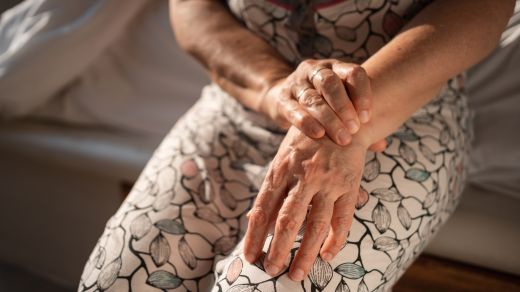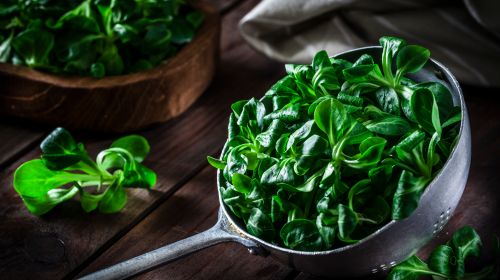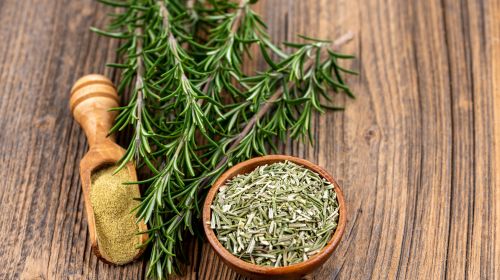In gout, the uric acid level in the blood is too high. As a result, uric acid crystals are deposited in the connective tissue of the skin, joints and organs. What are the symptoms of gout and why a low-purine diet is so important.
- © Getty Images/Johnce
Quick Overview: Gout (Hyperuricemia)
Symptoms: An acute gout attack manifests itself in severe pain. In addition, the joint is swollen, red and sensitive to touch. In the chronic course, gout nodes (tophi) form.
Nutrition: It is important to change your diet to low-purine foods that metabolize little uric acid and avoid alcohol.
Causes: A gout attack is caused by an increase in uric acid in the body. The reason is often purine-rich food, alcohol and lack of exercise.
Therapy: Taking uric acid-lowering medication (uricostatics or uricosurics) to inhibit uric acid formation or increase excretion, protect and cool the joint, and change your diet.
Article content at a glance:
What is gout?
Although gout is caused by a metabolic disorder, hyperuricemia is one of the rheumatic diseases because it attacks the musculoskeletal system. The disease usually occurs in attacks. Medically, this is an acute inflammation of a joint.
A gout attack is usually triggered by elevated uric acid levels. The normal uric acid level is
- in men between 3.4 and 7 milligrams per deciliter (mg/dl),
- slightly lower in women at 2.4 to 5.7 mg/dl.
If the uric acid concentration rises above 7 mg/dl, uric acid crystals can be deposited in body tissues.
What are the symptoms of gout
In the beginning, only one joint becomes inflamed, in over 50 percent of cases the metatarsophalangeal joint. However, individual finger joints including the metatarsophalangeal joint, ankle or knee joints or the elbow can also be involved.
Signs of inflammation in the joint:
- swelling
- red to violet shiny skin
- warmth
- very severe pain when touched or moved
Along with the joint pain, nausea, fever or a racing heart (tachycardia) can also occur. Since kidney stones also indicate a high uric acid level in the blood, they can also be a symptom of gout.
Symptoms differ depending on the stage
The disease progresses in different stages, in which the symptoms also differ:
Stage 1: Phase without symptoms when uric acid levels are elevated. This phase can last about five to ten years.
Stage 2: The first symptom is often an acute attack of gout, usually at night without any prior symptoms. Even before that, there are (often unknown) elevated uric acid levels. If left untreated, a gout attack lasts from a few hours to several days.
Stage 3: Period between two attacks of gout without symptoms (intermediate phase), which can last from six months to two years. Despite further elevated uric acid levels, there are no symptoms. Furthermore, uric acid crystals are deposited in the bones, joints and soft tissues.
Stage 4: At the end there is chronic gout with typical nodules (tophi) and progressive changes in the joints. The yellowish-chalky nodules in the subcutaneous connective tissue usually form on the ear, but also on the hands, feet, elbows, bursae and tendon sheaths.
Is the chronic stage reached, the painful gout attacks last longer and several joints are affected at the same time. The symptom-free periods, on the other hand, are becoming shorter and shorter. The chronic inflammation destroys the joint cartilage and attacks the bone. When deformed or stiffened, the joints lose their normal function. The inflammatory process is similar to that in rheumatism.
What is gout therapy like?
If an acute gout attack is present, the pain and inflammation should be relieved. This happens with
- Drugs (prednisolone, colchicine or nonsteroidal anti-inflammatory drugs),
- joint protection,
- Cool,
- lots of liquid and
- diet change
The medication should be taken 12 to 24 hours after the onset of pain until the acute gout attack has subsided (maximum 14 days).
Long-term treatment of gout
After an acute gout attack, further attacks should be avoided because they damage the joints and organs in the long term. Uric acid-lowering drugs are prescribed to lower elevated uric acid levels. They inhibit the formation of uric acid in the body (uricostatics such as allopurinol) or promote the excretion of uric acid via the kidneys (uricosurics such as benzbromarone or probenecid).
Those affected should also change their eating habits and avoid alcohol as much as possible. Risk factors that favor an increase in uric acid levels should also be reduced. These include obesity, high blood pressure (hypertension) and high cholesterol levels.
Reading tip: Purine table as PDF for printing
diet in gout
With gout, it is recommended to eat less meat and pay attention to the purine content of food. Foods that are particularly rich in purines should be avoided if the uric acid level is high. This includes:
- Offal such as liver, heart, kidney
- pork meat
- beef
- goose meat
- cured meats
- legumes
- Sardines, herring and trout
- Mussels, crayfish and shrimp
- Alcohol, especially beer and spirits
On the other hand, protein-rich foods are allowed, i.e. milk and milk products, fruit and most vegetables.
Are there home remedies for gout?
Uric acid is excreted in the urine. Drink a lot to promote elimination. However, this is only possible with normal kidney function. In addition, certain home remedies can relieve joint pain during a gout attack.
Proven home remedies:
Cottage cheese wrap: Quark has an anti-inflammatory effect and can thus alleviate the acute symptoms of gout. To do this, spread a pack of cool quark on a damp cloth. Fold the cloth in such a way that there is only a thin layer of cloth between the curd and the joint. Leave the quark wrap on the joint for one to two hours.
vinegar wrap: It cools the hot and painful joint. To do this, mix one part vinegar (e.g. apple cider vinegar or vinegar essence) with two parts water and soak a light cloth in the mixture. Wrap it around the joint for about 20 minutes.
Hay Flower Bag: Dried hay flowers are available in pharmacies, drugstores or online shops. For the pain-relieving household remedy, fill a small cloth bag with hay flowers and leave the bag in hot water until the contents are warm. Then place the hay flower bag on the affected joint for 30 minutes. Caution: Heat should not be used in the case of an acute inflammation, as it promotes the inflammatory processes.
Causes and triggers of gout
The cause of gout is an increased uric acid level, i.e. an increased uric acid concentration in the blood (hyperuricemia). Uric acid is also produced in healthy people as a breakdown product of cell metabolism and is excreted via the kidneys and intestines. Uric acid is also produced when the body breaks down purine-containing foods.
If the uric acid concentration rises above 7 mg/dl, uric acid crystals can be deposited in joints and other parts of the body. The crystals tend to form in the joints of the extremities and on the ears because it is slightly cooler there than in the torso – uric acid crystallizes more easily at lower temperatures.
Triggers for increased uric acid concentration:
Fatty food: The classic gout attack occurs after eating high-fat food and consuming foods with a high purine content.
Alcohol: A major trigger of gout. Above all, beer and high-proof liquor increase the uric acid level.
Medicines: Some medicines cause uric acid levels to rise. These include diuretics and certain non-cortisone anti-inflammatory drugs.
Genetics: The tendency to have elevated uric acid levels is inherited.
Underlying diseases: For example, kidney diseases prevent the excretion of uric acid, and chronic alcoholism also causes increased uric acid levels in the blood.
Diagnosis of suspected gout
The doctor begins the examination with a detailed questioning of the medical history (anamnesis) and symptoms. An indication of a gout attack is that it goes away within two weeks. Similar seizures are often preceded. Relatives who are ill also reinforce the suspicion of gout.
A gout attack must be differentiated from other diseases, especially a bacterial infection with a very similar course. For this purpose, the joint is punctured and the synovial fluid is subsequently evaluated in the laboratory.
X-ray examinations of rheumatic nodules or soft tissue nodules only make sense in advanced stages.
determine uric acid levels
In the case of an acute gout attack, the uric acid level can be elevated, but does not have to be. Sometimes the drop in uric acid concentration triggers a gout attack, for example in connection with fasting cures. Therefore, the uric acid level is an important factor in recognizing the risk in symptom-free phases. It is also a crucial indicator for progress control.
course of the gout
Gout usually has four stages with different signs. Acute phases alternate with those in which there are no symptoms. The earlier gout is diagnosed and treated, the better the prognosis. Gout left untreated for a long period of time leads to chronic pain, joint deformity or disability.
Possible complications
Chronic gouty kidneys are a complication. They lead to kidney weakness and even kidney failure. If the kidney vessels are also damaged, high blood pressure (hypertension) also occurs.
Acute urate nephropathy is acute kidney failure due to uric acid deposits. It is caused by an acute increase in uric acid concentration with simultaneous low fluid intake.
With today’s treatment options, the chronic form is very rare. It usually only occurs in gout patients who do not consistently follow the therapy prescribed by the doctor.



